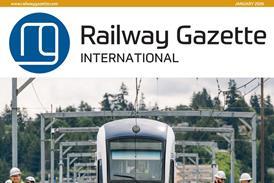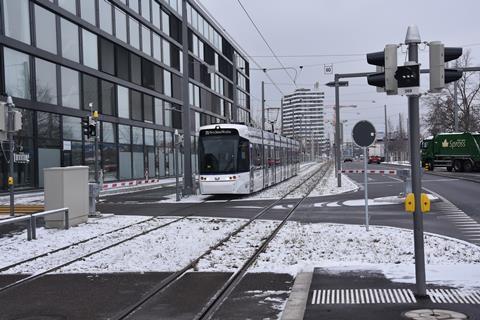
SWITZERLAND: The 13 km Limmattalbahn light rail line linking Altstetten, Schlieren, Dietikon and Killwangen-Spreitenbach opened for revenue service on December 11.
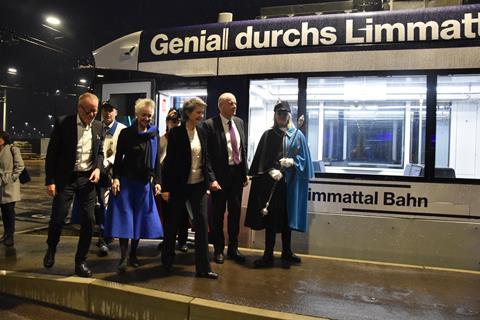
The line had been formally inaugurated two days earlier, with an event attended by former Swiss President and Minister of Transport Simonetta Sommaruga.
Effectively forming an extension of the Zürich tram network into neighbouring Aargau canton, the metre-gauge line has been developed at a cost of SFr755m, of which the federal government contributed a third. This total included SFr130m for road improvements aimed at diverting traffic out of the town centres along the route. The line is projected to carry 25 000 passengers/day in the first year of operation, increasing to around 40 000 in the longer term.
Designated as tram route 20, the Limmattalbahn starts from SBB’s Altstetten station, and runs south of the SBB main line. It serves 27 stops, of which five provide interchange to the S-Bahn network. Around 92% of the route runs on segregated tracks, and the end to end journey time is 39 min, a commercial average of 22 km/h. Services operate every 15 min, at speeds up to 60 km/h.
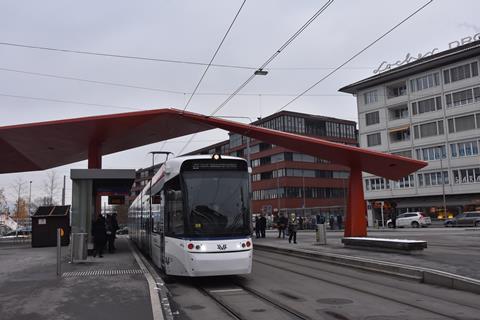
Between Farbhof and Schlieren the tracks are shared by ZVV tram route 2, which was extended to Geissweid in 2019. West of Schlieren, Limmattalbahn services pass through the 245 m Färberhüsli tunnel to serve the Limmattal Hospital where new buildings were opened in 2018. The line then serves the town of Urdorf with its cantonal high school before entering Dietikon. It serves the main station, where interchange is provided to inter-city and S-Bahn services including the metre-gauge Bremgarten-Dietikon Railway from Wohlen which is operated as route S17.
After passing through the centre of Dietikon, the line crosses into Aargau canton, where a 600 m branch diverges to the depot, which lies adjacent to SBB’s Limmattal marshalling yard. The main route serves the Tivoli shopping mall in Spreitenbach before terminating at Killwangen-Spreitenbach S-Bahn station. An extension across the River Limmat to Baden is under consideration, although the traffic projections for this section are lower.
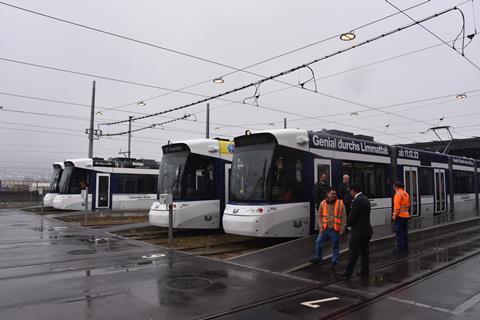
Operated by Aargau Verkehr, the Limmattalbahn is worked by a fleet of eight Tramlink LRVs supplied by Stadler from its Valencia plant in Spain. These 44 m vehicles were procured in a joint tender with Baselland Transport which ordered similar LRVs for the rebuilt Waldenburgerbahn. The dual-voltage units take power at 600 V DC between Altstetten and Schlieren, for compatibility with the Zürich trams, and the rest of the line is wired at 1·2 kV DC as used by the Bremgarten-Dietikon Railway with which the line shares a 160 m section of track through Dietikon.
Urban enabler
The Limmattalbahn is intended as a feeder for the Zürich S-Bahn network and an enabler of urban development, favouring what local architect and economist Sibylle Wälty calls ‘10 min neighbourhoods’, in which all routine services and facilities are available within a short walk.
The line is expected to encourage denser development and avoid the threat of suburban sprawl in the Limmat valley, where the local transport system was already overloaded.
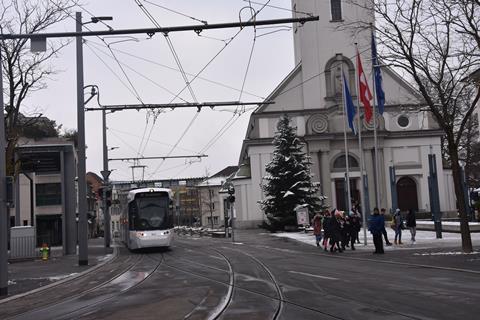
However, the project proved controversial; planning and construction have taken 15 years, marked by two hard-fought referenda. Objections included alleged redundancy with the S-Bahn, the cost of building a light rail line compared to a trolleybus, doubts about potential growth, fears of excessive urbanisation and the loss of road capacity.
The first referendum in 2015 saw the project backed by 64% of voters in Zürich canton but rejected by 64% of those in Dietikon. A second vote in 2018 saw 83% of Zürich voters and 52% in Dietikon approve construction of the line from Schlieren to Killwangen.



